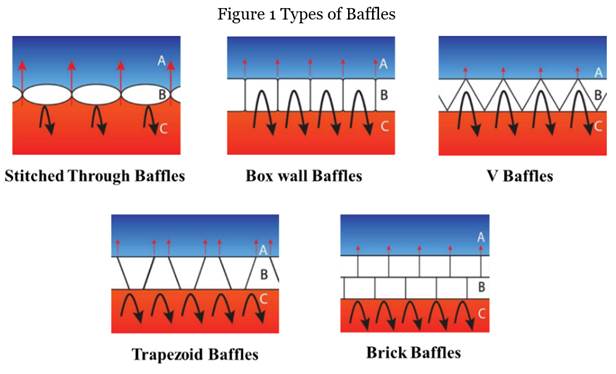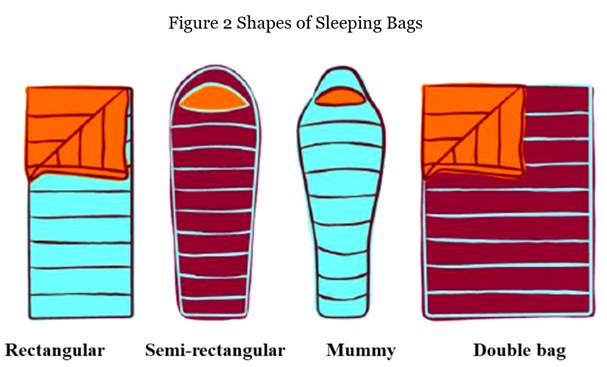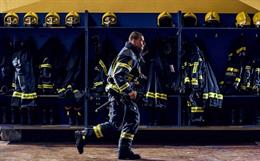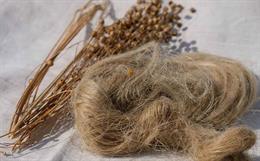A sleeping bag is an insulated, lightweight, portable bedding designed for outdoor sleeping activities such as camping, hiking, and climbing. It is essentially a quilt that can be zipped up to form a tube, offering a cozy sleeping environment. The construction of a sleeping bag includes an outer layer, an inner lining, and a filler for insulation. The main purpose of a sleeping bag is to provide warmth and protect against cold weather by trapping air inside, which is then warmed by the body’s natural heat.
When selecting a sleeping bag, important factors to consider include the temperature rating, shape, size, fit, and insulation type. Sleeping bags are typically categorised by their temperature ratings, with most designed for use in conditions ranging from 10 to 50 degrees Celsius, catering to the popular summertime camping. Models rated for 10 to 35 degrees are ideal for spring, fall, and mild winter conditions, while bags rated at 10 degrees and lower are suitable for cold winter weather.
Table 1 Thermoregulation of Human body
|
Thermal Radiation |
|
Thermal radiation is the transfer of energy through electromagnetic (EM) waves. |
Breathing |
|
In colder temperatures, the body loses heat and moisture through breathing. |
|
Conduction |
|
It happens when solids come into contact with one another. |
Convection |
|
It is the movement of molecules within fluids (liquids and gases) caused by heat transfer. It happens when liquid or gas molecules move apart. |
|
Evaporation |
|
The human body sweats in order to regulate body heat. This evaporative cooling process is an effective reaction when human body attempts to cool itself down, yet ineffective if the sweat is not able to evaporate away from human body. | |||
Factors Influencing Thermo-regulation of Human Body
Slim or Heavy: People with greater fat reserves have better insulation potential. People with greater muscle mass also produce more heat and do not cool down as quickly. Slim people usually consume as many calories as they burn.
Gender: Women tend to generally feel cold faster than men. The average comfort value for a standard female is 5o C higher than for a standard male.
Age: Metabolic rates tend to slow down as one becomes older. The lower the metabolic rate, the less body heat a person generates.
Condition: People who are physically fit and often spend time outdoors are less susceptible to cold. In addition, when a person is exhausted their body generates less heat as well.
Energy Input & Consumption Before Going to Sleep: The amount of energy or warmth generated while sleeping is affected by a person’s activities and energy input.
Sleeping Bags – Construction
Sleeping Bags comprise an outer layer, a filling, and an inner lining. Within the sleeping bag’s shell are a number of chambers called Baffles. Baffles contain the down used to insulate. The better their design, the better the performance of the sleeping bag. To insulate efficiently the down has to loft, which means to expand as it traps warm air. Too much space in the baffle is inefficient as the down disperses. Too little space constricts the down and it cannot loft fully. There are a number of different types of baffles. All have advantages and disadvantages, which vary depending upon the type of product.

Table 2 Types of Baffles
|
Stitched Through Baffles, Box wall Baffles |
Used on cheap sleeping bags, extremely lightweight sleeping bags and sleeping bag quilts |
|
V Baffles |
V Baffles are the most thermally efficient baffle |
|
Trapezoid Baffles |
Has more chambers to store the down and less chance of it dispersing |
|
Brick Baffles |
Brick Baffles are used for extreme cold weather down sleeping bags |
Sleeping Bags – Materials
Table 3 Properties of Outer Layer/Cover fabrics
|
Types |
Properties | ||
|
Water resistant |
MVTR/g/m2 hr |
GSM | |
|
PERTEX Fabrics |
1,000 mm water column, after 7 wash cycles |
7,000 |
45 |
|
TEXPED PRO |
1,000 mm water column after 5 wash cycles |
22,000 |
41 |
|
Nylon/Polyester |
1,000 mm water column after 5 wash cycles |
12,600 |
40 |
|
Vapour Vent (V2) |
1,000 mm water column after 6 wash cycles |
15,500 |
46 |
|
Ripstop fabrics |
1,000 mm water column after 5 wash cycles |
13,500 |
42 |
Table 4 Filling / Insulation Layer Material
|
Material |
Properties |
Material |
Cu.in | |||
|
Down |
It is a pure, natural, thermal-insulation product. It is grown by birds, and in cold climates, it enables them to survive severe weather conditions. |
Duck down |
550 | |||
|
Loft |
It is a type of an insulation material to take in air and expand. |
Chinese goose down |
600 | |||
|
Alpine wool fibre filling |
Alpine wool used in sleeping bags serves as a natural air conditioning system. |
Hungarian goose down |
660 | |||
|
Down wool |
It is an innovative high-end filling made of 70 per cent down and 30 per cent specially treated wool. |
Polish standard goose down (grey) |
680 | |||
|
Synthetic fibre filling |
It is very popular for sleeping bags because it has a very high level of insulation. |
Polish super goose down |
800 | |||
|
Insulation layer materials | ||||||
|
Filling material |
Fill power |
Weight of down (g) |
Total fill volume | |||
|
Using Chinese down |
600 |
900 |
18000 | |||
|
Using Polish diamond |
870 |
700 |
20300 | |||
Table 5 Bag Liner Materials
|
Bag Liner Materials | |
|
Silk |
Very lightweight (about 5 oz.) and compact |
|
Cotton |
Strong, durable and absorbent |
|
Fleece and microfleece |
Soft, moisture-wicking and quick-drying |
|
Synthetics |
Moisture-wicking and breathable |
|
Insulated |
It uses hollow-core fibre insulation |
Table 6 Shapes of Sleeping Bags
|
Rectangular |
These bags allow plenty of room for both legs and arms to stretch out |
|
Semi-rectangular |
Offer a compromise between warmth and roominess |
|
Mummy |
Boost warmth and cut weight, this bag style has a snug fit |
|
Double bags |
Bags made for two are the best for couples who plan to sleep together |
|
Kid-size sleeping bags |
These are simply shorter, smaller and more affordable |

Conclusion
A sleeping bag is an essential textile product that is aimed at protecting people in cool or cold outdoor environments. They are widely used in field training, rescue and relief work and are also becoming common equipment in travelling and recreation for ordinary people. Sleeping bags serve as an important protective textile product for human body while sleeping under cool or cold outdoor environments. A sleeping bag should allow the wearers to sleep for four to eight hours without feeling cold under the bags’ operating temperatures.
- An, Y., Xu, G. and Shen, H. (2021), "Factors influencing thermal resistance of a down sleeping bag", International Journal of Clothing Science and Technology, Vol. ahead-of-print No. ahead-of-print. https://doi.org/10.1108/IJCST-05-2020-0071
- Yuying An, Guangbiao Xu, Hua Shen “Factors influencing thermal resistance of a down sleeping bag International” Journal of Clothing Science and Technology, ISSN: 0955-6222
- W. F. Song, C. J. Zhang, D. D. Lai, F. M. Wang & K. Kuklane “Use of a novel smart heating sleeping bag to improve wearers’ local thermal comfort in the feet”
- Huang, J. Prediction of air temperature for thermal comfort of people using sleeping bags: a review. Int. J. Biometeorol. 52, 717–723 (2008).
- Goldman, R. F. Biomedical effects of sleeping systems in Handbook on clothing: Biomedical effects of military clothing and equipment systems 2nd edn (eds. Goldman, R. F. & Kampmann, B.) Ch. 6b, 1–8 (International Society for Environmental Ergonomics, 2007), Scientific Reports volume 6, Article number: 19326 (2016)
- Zhang, C., Lai, D. Lu, Y., Wang, F. & Kuklane, K. Smart heating sleeping bags for improving wearers’ thermal comfort at the feet. Extrem. Physiol. Med. 4, A92 (2015).
- Chengjiao Zhang “Smart heating sleeping bags for improving wearers' thermal comfort at the feet” September 2015Extreme Physiology & Medicine 4(Suppl 1):A92
- Forough Amirshirzad “Assessment of the effect of body pressure on the warmth retention in sleeping bags” The Journal of The Textile Institute, 16 Feb 2021.
- Meredith Schlabach “Determining temperature ratings for children's sleeping bags” International Journal of Industrial Ergonomics, Volume 65, May 2018, Pages 153-160
- S. D. Livingstone “The composition of air in sleeping bags” International Journal of Biometeorology volume 32, pages29–32 (1988).

_Big.jpg)










